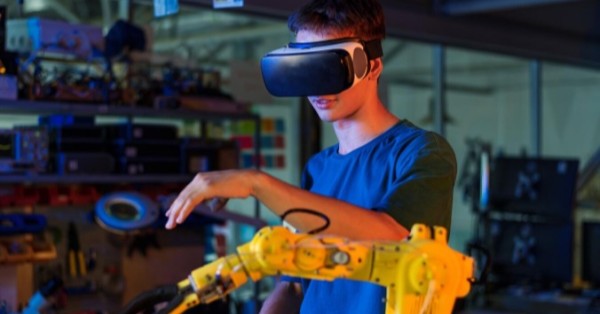Humanoid Robot Games: Stress-Testing 5G-Advanced and Embodied AI
Beijing’s first World Humanoid Robot Games is more than a spectacle. It is a live systems trial for embodied AI, connectivity, and edge operations at scale.
A global benchmarking arena for humanoid robots
Over three days at the Beijing National Speed Skating Oval, more than 500 humanoid robots from roughly 280 teams representing 16 countries are competing in 26 events that span athletics and applied tasks, from soccer and boxing to medicine sorting and venue cleanup.
The event blends research and competition: university labs and commercial teams are using the games to validate designs, stress-test software stacks, and benchmark perception and control under realistic constraints.
Performance reality check: progress and practical limits
Despite rapid advances, robots still showed the telltale stumbles of early embodied AI collisions in football, falls during sprints, and recovery routines that entertained the crowd as much as they exposed control challenges.
Even in track events, completion times remain far from elite human performance, underscoring the gap between lab benchmarks and robust real-world locomotion, manipulation, and balance.
5G-Advanced: The event’s digital nervous system
The games double as a staging ground for 5G-Advanced (5G-A) capabilities designed for uplink-intensive, low-latency, high-reliability robotics traffic.
Uplink-first 5G-A design indoors and outdoors
China Unicom Beijing, serving as the event’s exclusive communications partnerhas deployed full 5G-A coverage across the arena and surrounding areas, coordinating high and mid/low bands in a 3D network topology to push user-perceived downlink toward double-digit Gbps and uplink toward multi-Gbps outdoors.
Indoors, a digital system with 300 MHz of spectrum delivers multi-Gbps peaks and sustains uplink above 100 Mbps, so multiple 4K machine vision streams per robot can be transmitted without dropped frames, while air interface latency keeps responses in the tens of milliseconds needed for tight control loops.
Network slicing for robots, media, and spectators
The network segmentation separates spectator traffic from dynamically scalable robot channels, maintaining predictable performance even at peak demand and during concurrent live media production.
High-capacity uplink supports live 8K panoramic capture, shallow-compression UHD backhaul for broadcasters, and thousands of concurrent user streams without degrading robot command-and-control.
Operator and vendor signals for the 5G-A robotics ecosystem
China Unicom is positioning 5G-A as a platform for embodied AI beyond events, with emphasis on reliability, low latency, and end-to-end orchestration, while ecosystem partners such as Huawei highlight the need for dense indoor systems and robust uplink engineering to meet simultaneous robot, spectator, and media workloads.
Implications for telecom, cloud, and robotics roadmaps
The games compress the core challenges of deploying embodied AI into a single venue, offering a preview of commercial requirements for factories, hospitals, logistics hubs, and public spaces.
Embodied AI requires a new network profile
Humanoid and mobile robots flip the traditional consumer traffic model: they are uplink-heavy for perception, require consistent sub-20 ms air latency for closed-loop control, and need high reliability plus precise positioning for safe navigation and collaboration.
5G-A features such as improved uplink capacity, enhanced positioning, advanced scheduling, and network slicing map directly to these needs, while sidelink and multi-TRP can add resilience for dense robot-to-robot coordination in future releases.
Edge compute is essential for robotics
On-premises or metro-edge inference keeps perception and planning close to the robot, reducing jitter and backhaul cost, and enabling mixed autonomy modes that combine on-device compute with edge offload for bursty tasks like multi-camera fusion.
Operationally, this calls for unified orchestration across RAN, transport, MEC, and application layers with observability that can enforce per-robot QoS, safety policies, and change managementespecially during firmware and model updates.
Standards and safety will drive scale-out
As operators move from demos to production, alignment with 3GPP 5G-Advanced (Release 18/19) capabilities, IEC and ISO safety norms for mobile robots, and evolving industry profiles for time-sensitive applications will determine how quickly embodied AI can be deployed in regulated environments.
China’s policy tailwinds and market signals
China is using the event to showcase national ambition in robotics and AI, with clear implications for global competition and supply chains.
State backing and ecosystem momentum in robotics
Humanoids have been singled out by Chinese policymakers as a strategic focus, alongside a sizable national fund for deep tech, including robotics and AI startups, which points to accelerated commercialization and local supply chain buildout.
The International Federation of Robotics has noted the policy emphasis on humanoids, and multiple recent showcases in China, from a humanoid marathon to retail store launchessignal active market cultivation from lab to consumer-facing channels.
Benchmarks for global operators and vendors
For telecom and cloud providers, the Beijing deployment offers a template: dense indoor 5G-A with large contiguous spectrum, uplink engineering as a first-class KPI, and operational separation of heterogeneous traffic types under live conditions.
For robotics OEMs and integrators, the takeaway is to design for network variancegraceful degradation, local failover, and safety compliance while exploiting deterministic connectivity where available.
Next steps for operators and enterprises
With embodied AI moving from labs to live venues, stakeholders should pivot to production-grade designs and playbooks.
Prioritize uplink, slicing, and positioning in 5G-A
Rebalance RAN and spectrum strategies around uplink throughput and reliability; implement network slicing that isolates safety-critical robot traffic; and pilot enhanced positioning to tighten navigation and compliance in shared spaces.
Build edge-native robotics platforms
Deploy MEC adjacent to robot fleets with GPU resources, real-time observability, and CI/CD pipelines for models and firmware; integrate safety interlocks that operate even under partial connectivity loss.
Adopt joint validation with robotics teams
Run co-engineering trials with robot vendors and university labs to test handoffs, interference scenarios, and failure modes under load; make telemetry and SLA definitions part of procurement and acceptance criteria.
Track ecosystem and policy developments
Monitor 3GPP 5G-Advanced features tied to deterministic networking, vendor roadmaps for indoor digital systems, and national funding signals that could shift hardware sourcing, certification paths, and deployment economics.
Bottom line: this event shows that 5G-Advanced, edge compute, and robotics are converging quickly, and the winners will be those who can deliver predictable uplink, low-latency control, and safe operations at scale.































